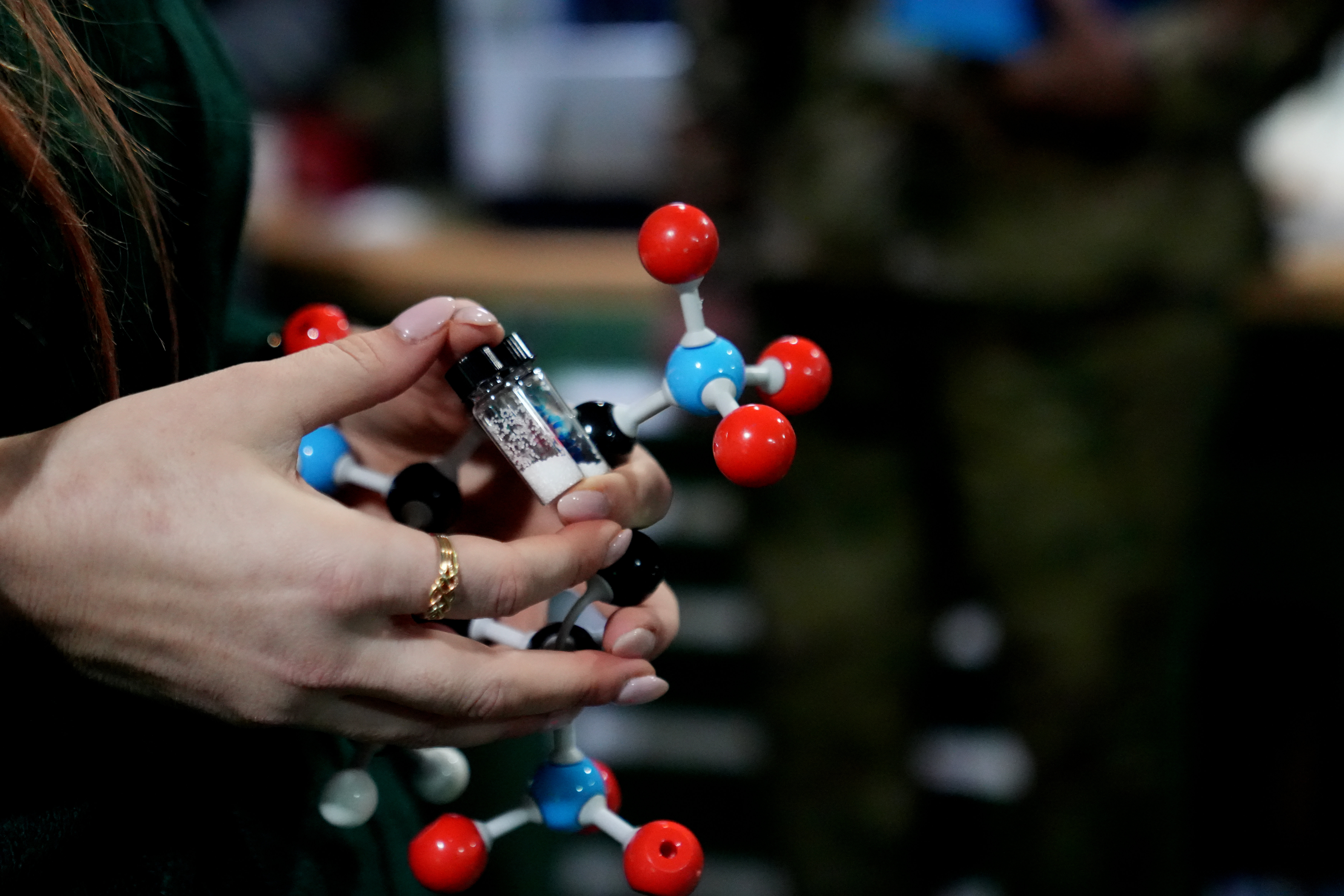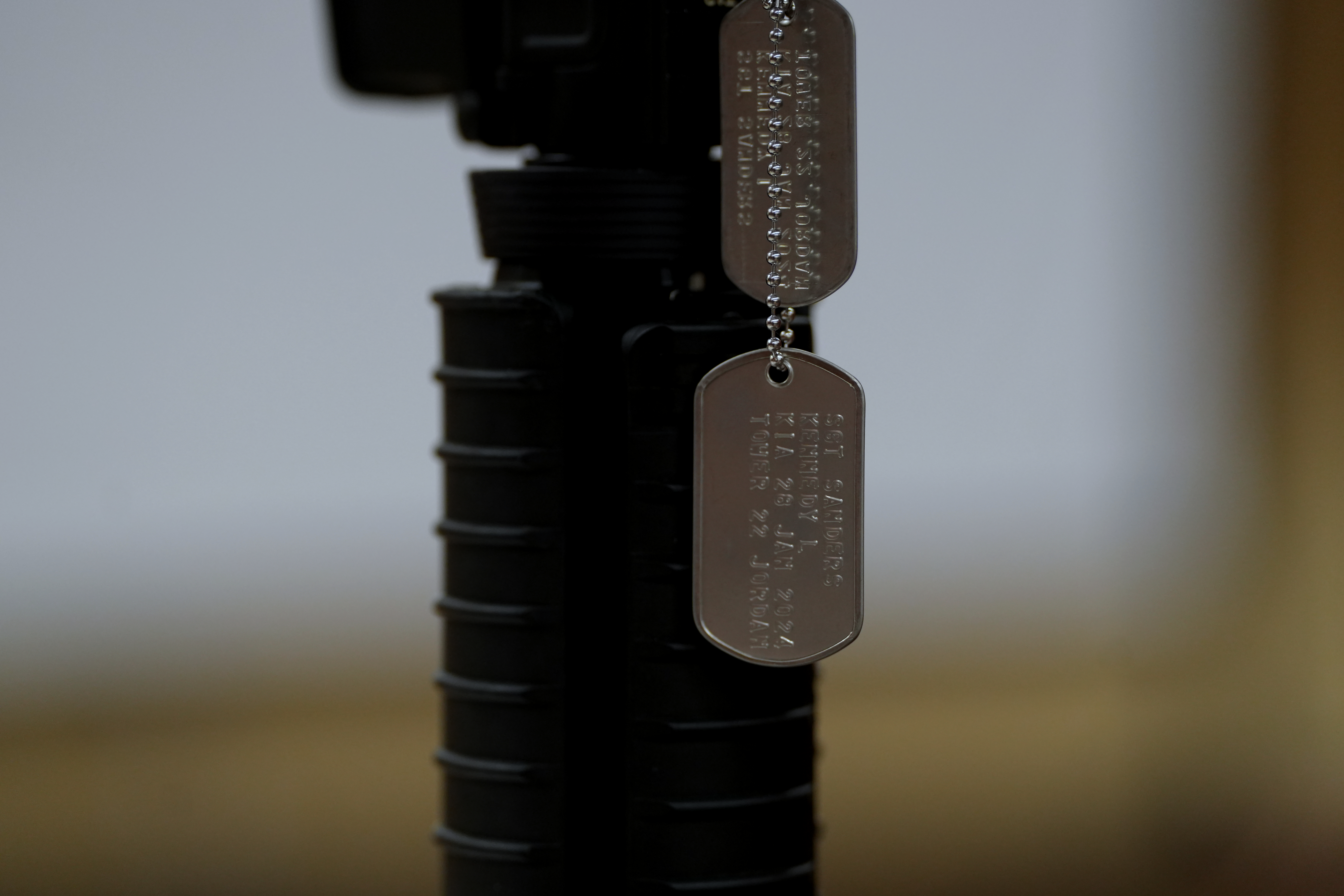On January 24, the Forensic Exploitation Directorate (FXD) of the Army Criminal Investigation Division hosted a capabilities tour for senior leaders of the 412th Theater Engineer Command, including Maj. Gen. Matthew Warne, the commanding general of the 412th Theater Engineer Command (TEC), and Command Sgt. Maj. Ryan Bodmer, the command’s senior enlisted advisor. The event provided an in-depth look at FXD's specialized forensic tools, technologies, and methodologies that play a crucial role in modern military operations.
The visit also highlighted FXD's pivotal role in responding to the January 28, 2024, drone attack on Tower 22, a military outpost in northeastern Jordan. The attack injured 47 and claimed the lives of three Soldiers from the 412th TEC—Staff Sgt. William J. River, Sgt. Breonna A. Moffett, and Sgt. Kennedy L. Sanders.
Col. Rob Coker, who served as the chief of staff for the 412th Theater Engineer Command in 2024 reflected on the significance of the event: “This visit was scheduled to better understand the support we all received in the aftermath of the Tower 22 attack. We wanted to better understand what FXD can do, but also what they did for the command and the families of the brave Soldiers who died and were injured in the attack at Tower 22.”
A capabilities tour is an organized presentation designed to showcase an organization’s expertise and resources through demonstrations and exhibits. These events educate leaders, stakeholders, and decision-makers on how an organization’s capabilities contribute to achieving broader operational goals.
FXD, located at Gillem Enclave in Forest Park, Georgia, provides forensic exploitation teams to support joint force commanders and combatant commands. Staffed by Department of the Army civilian scientists, these teams are equipped to conduct forensic analysis in remote locations. These teams can be configured to fit specific operational requirements to augment a commander’s staff for training exercises and meet large-scale mission demands.
FXD provides military commanders with a range of forensic capabilities that support operations and investigations. These include DNA analysis, which aids in identifying individuals through biological evidence, and latent print collection, which involves extracting and analyzing fingerprints to link suspects to crime scenes or operational incidents. FXD also offers electronic exploitation, analyzing devices to uncover critical data, patterns, and networks, as well as chemical exploitation, which examines substances for traces of chemical agents, toxins, fire arms and tools markings, or explosives.
"It was incredible to see firsthand everything the Forensic Exploitation Directorate brings to the fight," said Command Sgt. Maj. Ryan Bodmer. "The way they use science to support and protect our troops is truly impressive. Their work isn’t just about gathering evidence; it’s about giving commanders the information they need to make smart decisions in real time.”
After the drone attack on Tower 22, FXD collaborated with Army Explosive Ordnance Disposal (EOD) units to collect and analyze the unmanned aerial system (UAS) used in the attack. Within 28 hours, FXD reconstructed and analyzed the drone, significantly outperforming the standard 72-hour emergency expectation. Their work, and the work of others, provided critical evidence that contributed to the identification and prosecution of individuals involved in the attack.
One advanced discipline of FXD is to recover and analyze serial numbers on components, even when they have been defaced or removed. This capability is critical for tracing the origins of parts found in devices such as unmanned aerial systems, weapons, or other materials encountered in combat zones or investigations. Using methods such as chemical etching, magnetic particle testing, and alternate light sources, FXD can reveal serial numbers that are invisible to the naked eye.
Once serial numbers are recovered, FXD cross-references them with databases to identify manufacturers, supply chains, or distribution networks. This information provides essential insights into enemy logistics, links evidence to known groups or attacks, and supports prosecution efforts in military or civilian courts. By tracing the origins of components, FXD not only strengthens operational intelligence but also plays a vital role in disrupting adversary supply networks and improving Soldier safety in the field.
Col. Jeffrey Dulgarian, commander of the 926th Engineer Brigade, remarked on the personal impact of FXD’s efforts, “I know the families have carried the weight of this loss. The efforts of FXD have deepened my understanding of the event and helps bring a sense of closure for the families of those we lost. This team has worked hard to ensure the sacrifices are honored.”
Following their visit to FXD, the 412th TEC leadership participated in a memorial event at the Armed Forces Reserve Center on Fort Moore in Columbus, Ga., to honor the three fallen Soldiers. Nearly a year after the tragedy, fellow Soldiers, families, and friends gathered to pay their respects. The ceremony included heartfelt remarks from fellow Soldiers and unit leaders. Family members of the fallen Soldiers were present, surrounded by the support of the 718th Engineer Company and the broader Army Reserve community.
Maj. Gen. Matthew Warne highlighted the connection between the FXD visit and the memorial: “The work done by FXD honors the memory of our fallen Soldiers by uncovering the truth and ensuring those responsible are held accountable. Their efforts not only help bring closure to families but also strengthen our ability to protect Soldiers in the future. This visit and the memorial together serve as a powerful reminder of the sacrifices made and our ongoing responsibility to safeguard those who serve.”
As the Army adapts to an increasingly complex and dynamic threat landscape, the partnership between organizations like the 412th TEC and FXD stands as a powerful example of the importance of innovation and collaboration.



